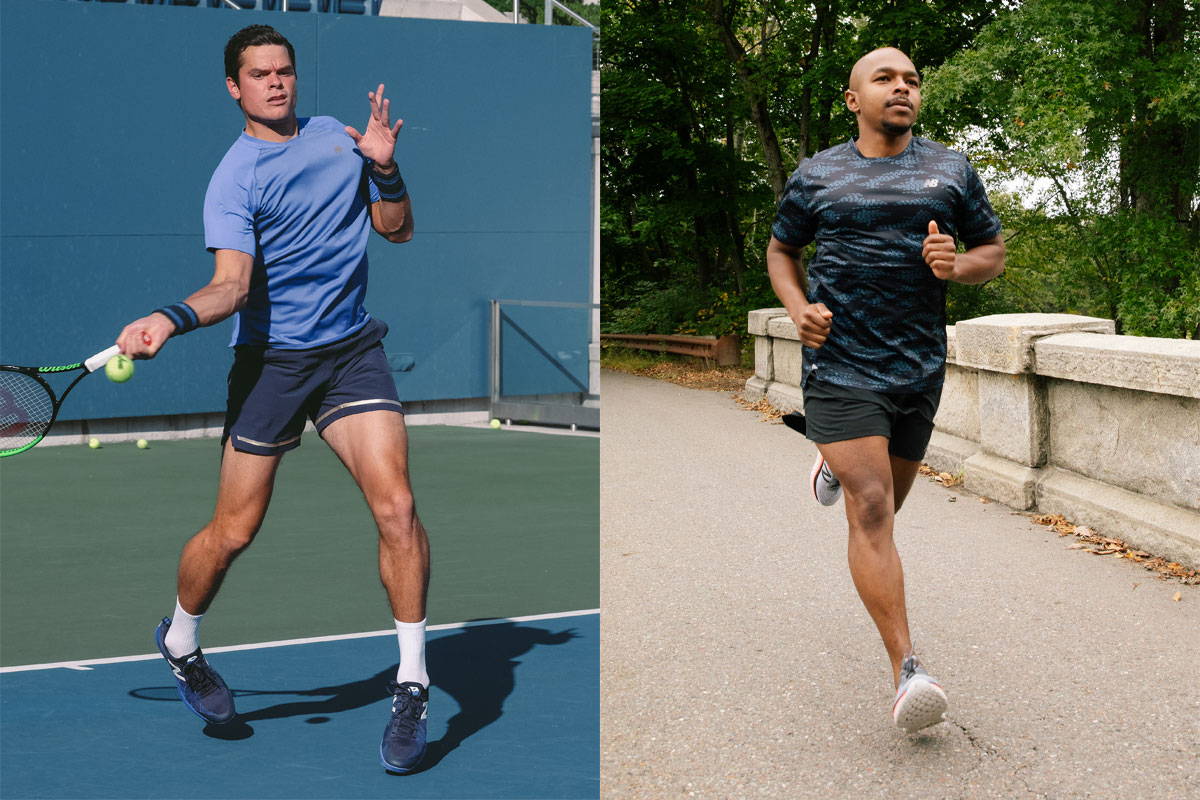Running and tennis: Two sports that put a lot of pressure on your feet. Whether you're sprinting the final mile of a race or covering the baseline to smash a return shot, having the right pair of shoes makes all the difference.
On the flip side, wearing the wrong shoes for your sport can make it impossible to compete. Even worse, it can lead down the path toward injury.
If you’re unsure about which shoe to choose for your activity, let us clear up any confusion and help you find the perfect pair.
The three most significant differences between running and tennis shoes are:
1. Design
2. Cushion
3. Grip
Design
Running shoes are built to go one way; forward. They usually have padding in the heel and forefoot to absorb shock in high-impact areas and provide energy return to propel you forward.
Running shoes have a flexible forefoot to help you push off after each stride and are rigid in the midfoot to prevent excess movement.
On the other hand, tennis shoes offer more lateral stability. Think side-to-side movements like gliding back and forth across the baseline.
Tennis shoes usually have a lower stack height and heel-to-toe offset so players can feel closer to the court. The lower tennis shoes are to the court, the more lateral stability they provide. That's why tennis shoes place less of an emphasis on cushioning compared to running shoes.
Speaking of cushioning…
Cushion
Running shoes will usually have more cushioning than tennis shoes. This is due to the repetitive forward motion this activity involves.
More cushion leads to better shock absorption, which protects your joints from impact and helps you stay injury-free. Tennis shoes focus on lateral support and traction over copious amounts of cushioning.
Grip
Tennis shoes often have a more durable outsole than running shoes. This grip is for the intense stress players place on their shoes with constant stops, starts, and slides on the court.
They’re also built for different and specific surfaces, including hard courts, clay and grass.
On the running side, there are different outsoles for special surfaces too. Road shoes are smoother on the bottom and provide traction on hard surfaces like pavement, asphalt and concrete.
Trail shoes offer more traction, and often deep lug, for off-road surfaces like gravel, dirt and mud.
Lastly, track and cross country shoes come with spikes to help you increase speed on synthetic and natural surfaces.
Frequently Asked Questions
Can I wear running shoes for tennis?
In a perfect world, no.
If price is a problem and you can only choose one, we’d recommend wearing a running shoe for both activities. While you won’t get the same lateral stability and grippy outsole that a tennis shoe provides, you’ll still have cushioning to keep you comfortable on the court.
Can I wear tennis shoes for running?
Wearing a tennis shoe for running would be a miserable experience.
They don’t have enough padding to support any kind of distance training. But in the end, the best way to guarantee an enjoyable experience is to have a separate pair for each activity.
Conclusion
Now that you know the difference between running and tennis shoes, you’re ready to take the first step and buy the right pair for your sport! If you'd like our help with picking the best shoes to support you and your goals, give us a call at 866-860-1416.
At Holabird Sports, our customers have trusted us for over three decades to meet their needs. We specialize in both running and racquet sports, carrying the best products in the business. Our goal is to provide you with accurate information and quality service to help you reach your fitness goals.

